TL;DR
Cracks around basement egress windows can be normal settling — or a sign of missing lintels, poor drainage, or wall movement. A structural engineer’s $400–$1,000 evaluation can confirm the cause and turn fear into leverage, often yielding seller repairs or a 1–3% price concession.
Lede / Opening Context (Hook + Stat + Sentiment)
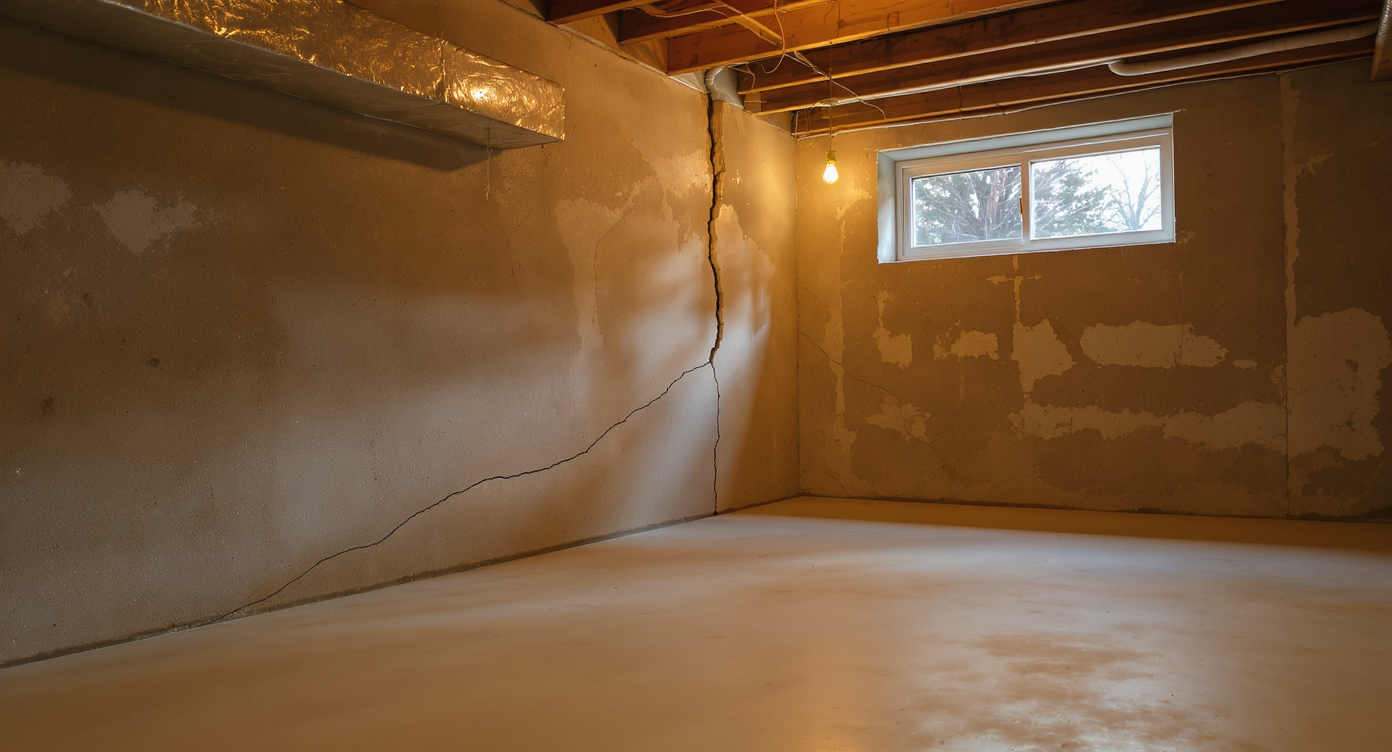
Spotting cracks near egress windows can unsettle buyers, yet understanding them is key before negotiating.
Buyer anxiety is real. You walk into the basement, spot fresh patchwork over diagonal cracks near big window wells, and suddenly the dream house feels risky. Inspectors say minor foundation cracks are common, but size, direction, and location matter. Why now? Because repair costs vary wildly — from a $600 crack injection to a six-figure foundation replacement — and only a qualified structural engineer can tell you what you’re actually looking at.
Alt text reference for listing visuals: “Foundation crack starting at egress window corner, running diagonally toward slab; prior cosmetic patch visible.”
National Data Insight

National data shows foundation cracks around windows are a routine, often harmless occurrence across the country.
Foundation cracks around windows are a classic home inspection find. Many are harmless settlement lines; some aren’t. Agents often note that a third-party structural review runs roughly $400–$1,000 in most metros, while typical interior crack injection and sealing cost $500–$1,200 per crack. If wall bracing or carbon fiber straps are required, contractors commonly quote $3,000–$9,000 for a section of wall. Full wall rebuilds or foundation replacements? Market analysts suggest they can exceed $80,000 in severe cases.
“Homes with documented, warrantied repairs tend to move faster,” listing agents often report. Buyers today expect clear photos of the affected wall, a repair invoice, and a transferable warranty. If you’re visualizing this for a listing, include a simple caption like, “Engineer-evaluated, epoxy-injected crack; gutter extensions added to address drainage.”
Data visualization note: a simple cost ladder — Engineer: $400–$1,000; Crack injection: $500–$1,200; Bracing/straps: $3,000–$9,000; Exterior drainage fix (gutter, grading, extensions): $300–$2,500; Full replacement: $80,000+ — helps buyers frame risk quickly.
Anecdote
Mini case study 3: A seller in the Midwest installed gutter guards but never extended the downspouts past the window wells. After two storms and two leaks, a $320 set of extensions and $900 in crack injection solved what looked like a “foundation problem.” The home sold the following month with a small $1,500 concession and a warranty letter in the file.
Regional / Segment Analysis
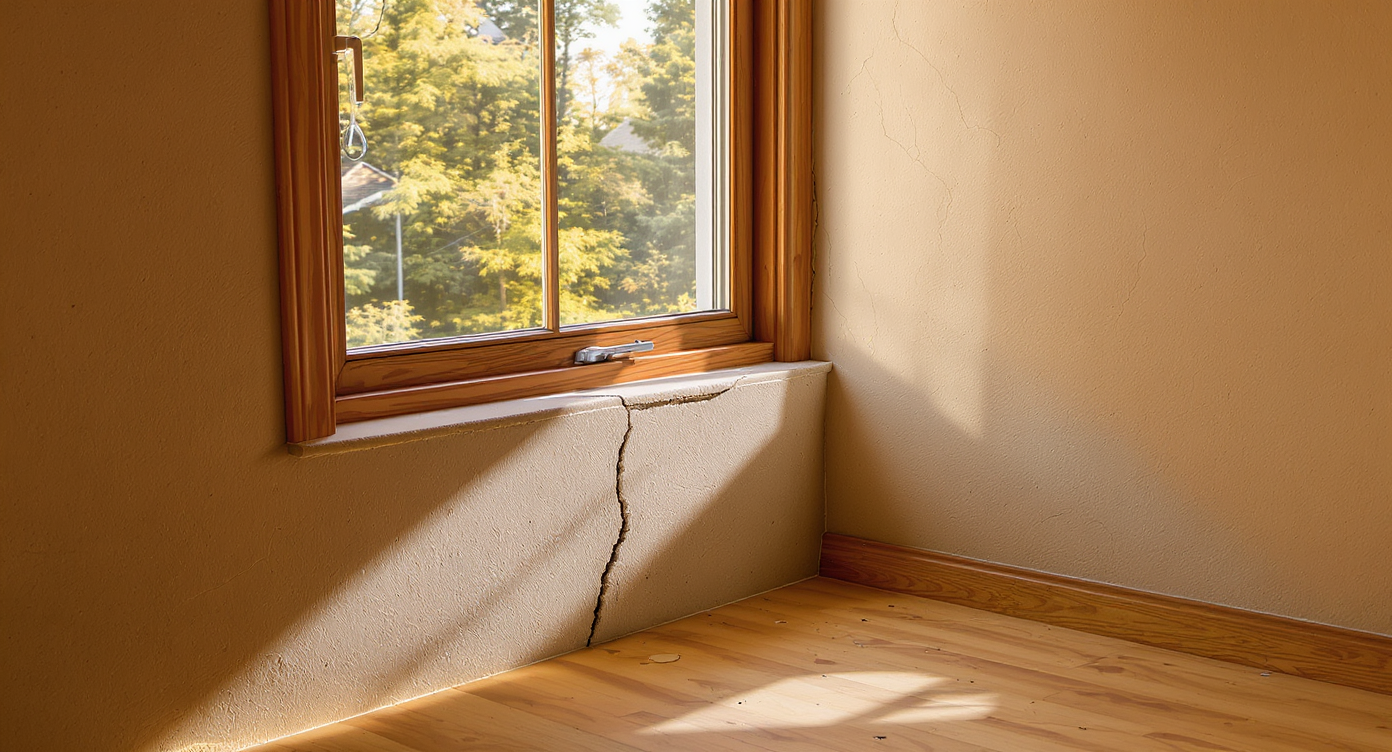
Regional risk varies; Northeastern homes often show foundation cracks influenced by local soil and weather conditions.
Not all cracks carry the same regional risk. Market watchers in the Northeast (especially parts of Connecticut and Massachusetts) flag “crumbling foundations” tied to aggregate containing pyrrhotite. When exposed to water and air over time, affected concrete can expand and break apart. Engineers in those zip codes often recommend core sampling if the home was built roughly between the 1980s and early 2010s and shows widespread cracking; remediation can surpass $100,000 and may require lifting the house to replace the foundation.
By contrast, arid Western markets see fewer water-driven failures, while frost-heavy upper Midwest regions encounter more freeze-thaw stress. In clay-heavy soils, buyers frequently hear about “expansive soil” — movement that can push or bow walls. “Horizontal cracks and inward bowing are the red flags,” foundation specialists often advise, whereas hairline vertical cracks with no displacement are usually low concern if the basement stays dry.
Behavioral & Market Psychology
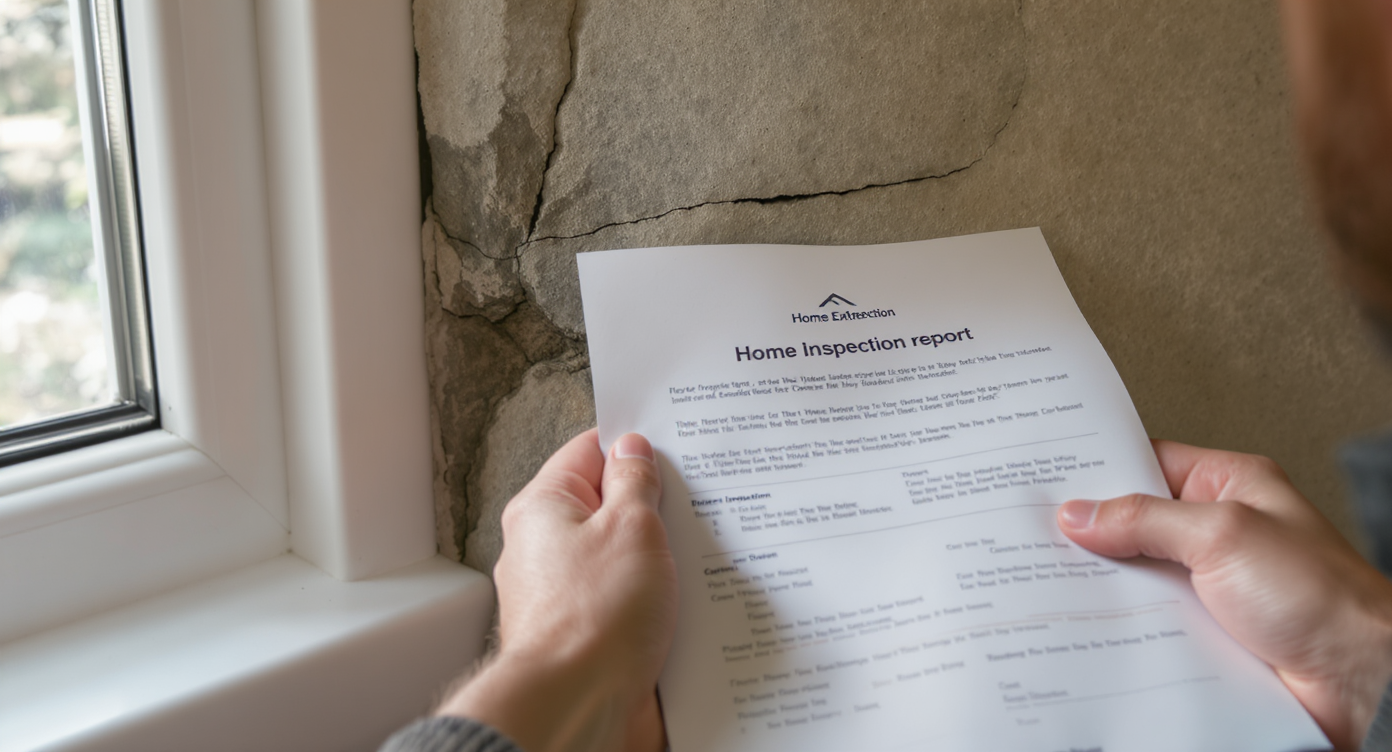
Buyer psychology around foundation cracks often amplifies concerns, affecting deal outcomes more than damage itself.
Crack psychology can break a deal faster than the crack itself. Buyers fear hidden costs. Sellers fear stigma. The worst combination is an obvious DIY concealment — a piece of insulation board or fresh paint over a long diagonal crack — without documentation. That reads as risk and invites a deeper investigation.
As one veteran agent puts it, “Cosmetic patching without an engineer’s note is a negotiation killer.” Buyers read concealment as uncertainty and price it in. Conversely, sellers who lead with transparency — engineer letter, photos before/after, invoices for gutter extensions and cleared window-well drains — often keep buyers at the table and limit concessions to 1–3%.
Mini case study 1: A first-time buyer noticed a 3/16-inch diagonal crack from a basement window corner. They paid $650 for a structural review. The engineer blamed clogged window-well drains and short downspouts, recommended epoxy injection and extensions. The seller paid $1,800 for repairs and credited $1,000 at closing. The buyer got peace of mind and a drier basement.
Mini case study 2: Another buyer found large egress windows cut into a poured wall with no visible steel lintels. An engineer deemed the openings under-supported and the wall slightly deflected. Estimated fix: install steel lintels and brace the wall, $12,000–$15,000. The buyer walked — and the next listing update showed “price reduced” alongside new steel angles above the windows.
Secondary Insight or Sub‑Trend
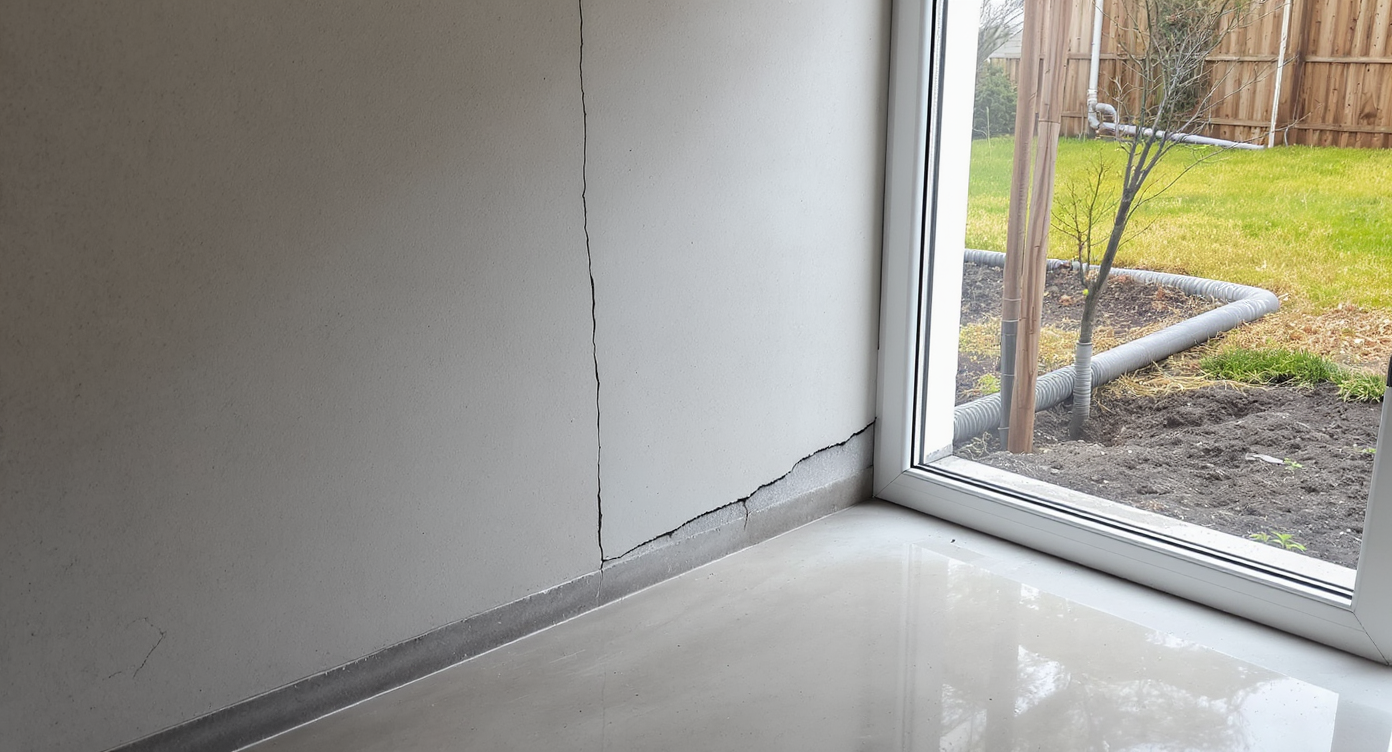
Effective waterproofing often addresses mystery moisture sources outside, beyond just foundation cracks indoors.
Most “mystery moisture” starts outside. Waterproofing contractors frequently estimate that the majority of wet basements trace back to surface water — missing gutters, short downspouts, negative grading, or window wells with clogged drains. When water pools near large egress windows, cracks at the corners are common, and leaks follow heavy rain.
Engineers point to telltales buyers can spot: diagonal cracks radiating from window corners (shear concentration), rust at metal window frames (ongoing moisture), and patchwork that doesn’t follow a clean line (DIY skim coat rather than injected repair). Another technical cue is support. Egress openings in a poured wall should be properly framed and supported; in many markets that means steel lintels or engineered headers designed to carry the load above. “Windows aren’t structure,” engineers remind clients. “Lintels carry the wall.”
When contracts fail, it’s often here: inspections cite missing lintels, poor drainage, or active seepage. The good news is that many fixes are straightforward. Gutter installation and 10-foot downspout extensions ($200–$600), regrading along one side of a house ($500–$2,000), clearing and re-plumbing window-well drains (varies), and epoxy injection with a transferable warranty (commonly under $1,200 per crack) can stabilize a listing and restore buyer trust.
Visualization Scenario
Caption idea for listing: “Engineer-reviewed diagonal crack at egress window; epoxy injection completed, window-well drain cleared; gutters and 10' extensions added.” Alt text: “Basement window lintel with repaired crack and dry concrete surface.”
FAQ
How should I evaluate foundation cracks when buying a house?
Start with a home inspection, then hire a structural engineer to assess width, direction, displacement, and moisture. For due diligence, “how to evaluate foundation cracks when buying a house” often comes down to two questions: Is water involved, and is the wall moving?
Are vertical cracks in a foundation bad or normal settling?
Many vertical hairline cracks are normal settling, but wider than 1/8 inch, active leaks, or any inward bowing warrant a structural engineer. Searchers asking “are vertical foundation cracks bad” should know drainage and movement determine risk.
What does it cost to repair foundation cracks near egress windows?
Crack injection typically runs $500–$1,200 per crack, while bracing or carbon fiber can cost $3,000–$9,000. For “cost to repair foundation cracks,” missing lintels or bowed walls can push repairs higher.
Should I hire a structural engineer before making an offer?
Yes — especially for long diagonal or horizontal cracks, or suspected missing lintels at basement windows. “Should I hire a structural engineer before buying a house” is an easy yes when risk or negotiation leverage is on the line.
How do I prevent water in basement window wells?
Add gutters and 10-foot downspout extensions, slope soil away, and clear or re-pipe window-well drains to the sump. For “basement waterproofing,” most pros start with surface water management.
Market Outlook / Reflection
There are markets — think inventory-tight coastal metros — where buyers accept hairline vertical cracks if an engineer signs off and the basement is dry. There are also homes with block or older poured walls, proper lintels, and decades of stable performance. “Cracks are not a verdict; they’re a clue,” as one structural engineer likes to say.
For Sellers (listing strategy with foundation cracks):
- Pre-inspect with a structural engineer and share the letter in your disclosure packet.
- Fix water first: gutters, downspout extensions, grading, and clear window-well drains.
- Use professional crack injection or carbon fiber straps; ask for a transferable warranty.
- Photograph repairs and add clear captions to listing visuals; buyers reward transparency.
For Buyers (due diligence on foundation cracks):
- Hire your own structural engineer; avoid contractors who only sell one solution.
- Measure and photograph: length, width (credit-card test), any bowing or step-off.
- Check outside: gutters, splash blocks, soil slope, and window-well drainage to the sump.
- Negotiate with facts: engineer report in hand often yields repairs or a price credit.
Deals rarely die because of concrete alone. They die because no one could explain it. If you love the home, buy certainty: a short, clear engineer letter is the cheapest insurance in real estate. And if you’re planning updates, tools like ReimagineHome can help you visualize layouts and finishes so you list — or live — with confidence.
.svg)

.svg)
.jpg)
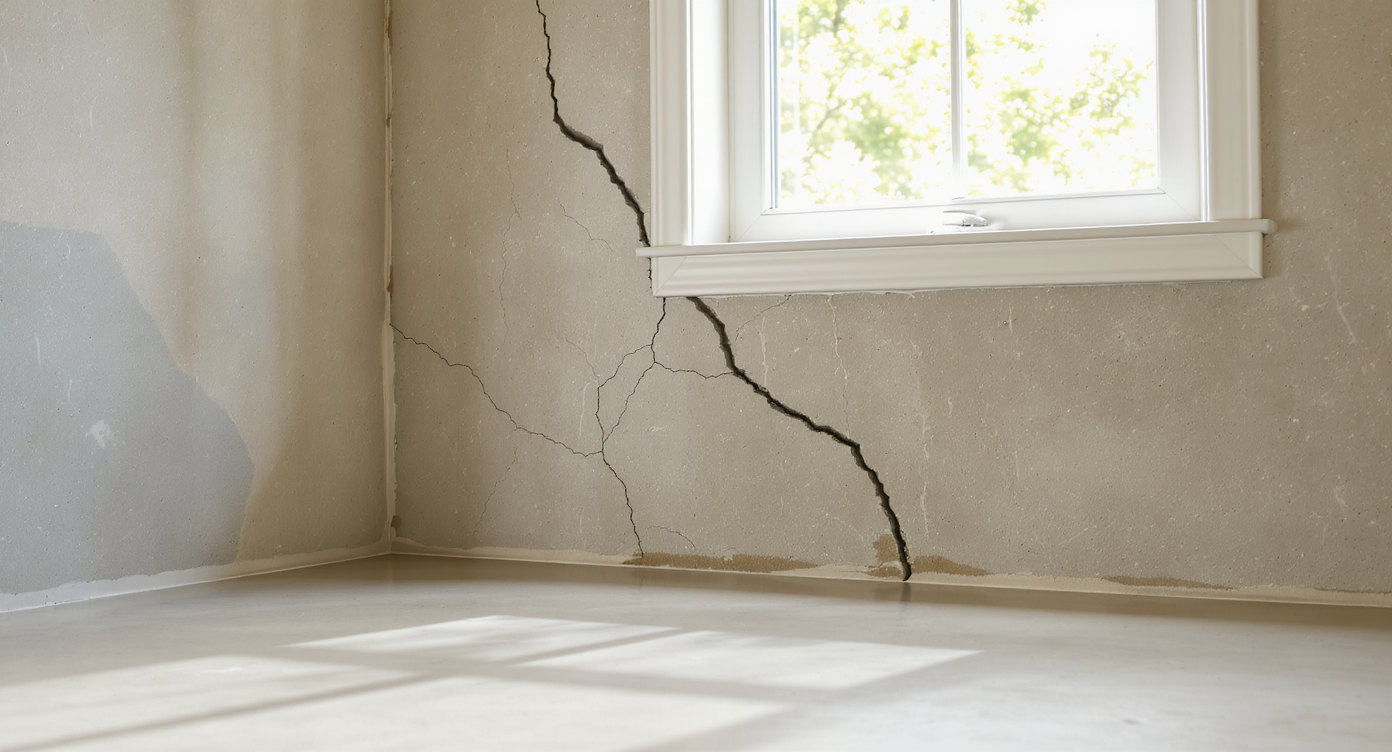







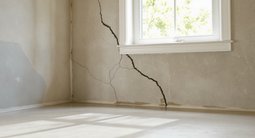




.png)